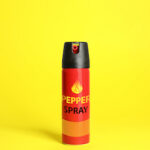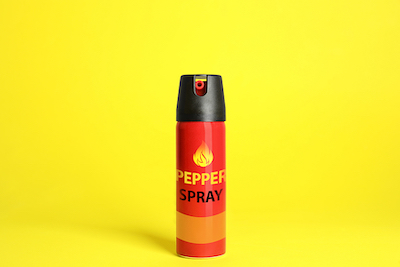When we talk about safety and protection in the outdoors or against potential threats, two common products come to mind: bear spray and pepper spray. Both sprays are used for defense, but they serve different purposes and have unique characteristics. In this article, we’ll explore everything you need to know about bear spray and pepper spray, focusing on their differences and similarities.
What is Bear Spray?
Bear spray is a specific type of pepper spray that’s used to protect against bear attacks. It’s a non-lethal deterrent designed to stop bears in their tracks without causing them permanent harm. Bear spray contains capsaicinoids, which are derived from chili peppers, and it’s the same ingredient that makes your mouth burn when you eat something spicy. When sprayed, it creates a cloud of pepper that irritates the bear’s eyes, nose, and lungs, causing it to become disoriented and retreat.
What is Pepper Spray?
Pepper spray, on the other hand, is designed for personal defense against human attackers. Like bear spray, it also contains capsaicinoids, but it’s formulated to be used in close-range encounters. Pepper spray is typically carried in small, portable canisters and can be easily accessed in an emergency. When deployed, it causes intense pain, temporary blindness, and difficulty breathing in the assailant, providing the victim a chance to escape.
Differences Between Bear Spray and Pepper Spray
1. Intended Use
The most significant difference lies in their intended use. Bear spray is used for wildlife encounters, specifically bears, while pepper spray is meant for self-defense against human attackers.
2. Strength and Concentration
Despite what many might think, bear spray is generally less concentrated than pepper spray. This is because bear spray is designed to create a barrier between the user and the bear, rather than incapacitate it. The goal is to deter the bear without causing permanent damage.
3. Spray Range and Pattern
Bear spray canisters are designed to spray the deterrent over a wider area and at a longer distance, usually between 18 to 30 feet. This allows a safe distance between the user and the bear. Pepper spray, however, is meant for close encounters, typically effective within a range of about 6 to 10 feet, and often comes in a stream pattern to target a specific attacker.
4. Size and Portability
Bear spray canisters are larger and bulkier due to the need for a wider spray range and longer spray duration. Pepper spray canisters are smaller, making them easier to carry on your person or in a purse for quick access.
Similarities Between Bear Spray and Pepper Spray
Despite their differences, bear spray and pepper spray also share several similarities:
1. Active Ingredient
Both utilize capsaicinoids as their active ingredient, which causes the burning sensation and temporary incapacitation.
2. Non-Lethal
Both are considered non-lethal deterrents. They aim to stop an attack without causing permanent harm to the assailant or animal.
3. Legal Restrictions
The legality and restrictions surrounding the possession and use of both bear spray and pepper spray vary by country, state, and even local jurisdictions. It’s important to be aware of these laws wherever you plan to carry them.
4. Training and Awareness
For both types of spray, knowing how to use them effectively and safely is crucial. Users should familiarize themselves with the spray’s range, the mechanism, and safety features to ensure they can act quickly and effectively in an emergency.
Conclusion
Understanding the differences and similarities between bear spray and pepper spray is crucial for anyone looking to use these products for protection. While they share a common ingredient and purpose—to deter threats—they are designed for different scenarios and threats. Remember, having the right spray is just one part of staying safe. Being aware of your surroundings, knowing how to use these sprays properly, and understanding the legal implications are all key components of personal safety and wildlife conservation. Whether you’re exploring the wilderness or navigating urban environments, being informed and prepared is your best defense.










